April 2024
I recently read an article by someone complaining about the boredom of retirement and no longer having the chance to learn new things. If you are a regular reader of this blog, you’ll know that this really got my goat up!
One of the big surprises of retirement and spending time on the road has been the things that we’ve learned. Not just about caravans and towing. We had to learn that very quickly, and we are still learning eleven years or so after buying our first van. But other stuff too.
Stuff like, navigation and geography, weather and climate, geology, biology, history, agriculture, arts, and culture to name a few.
As we’ve travelled around the country it seems that gold has sparked the founding of more towns than I could possibly mention. Here are a few standouts.
Kalgoorlie and the Super Pit (WA)
Gold was discovered in the Kalgoorlie region of Western Australia in 1893, sparking, yep you’ve guessed it, another gold rush. Legend has it that there was so much gold in the rocks that it was thought to be fool’s gold. The streets were paved with the rock until it was discovered to be gold and tellurium, so was quickly scooped up again. Woody’s maternal Great Grandfather who was a saddler in Melbourne, upped stumps and headed west with his wife and the youngest of their kids back in 1907. Such was the enthusiasm.
(March 2015) It is 40 years since we were last here and we vowed to return and see the place properly. It is a hot 35 degree day, windy and dusty.
The main Hannan Street (named after one of the original prospectors Paddy Hannan) has some beautiful buildings and many grand hotels. There were once eighty of them and there still are dozens. Hannan Street has wide verandas and the footpaths are inlaid with pretty stone patterns. We enjoy a coldie in the York Hotel then expire with the heat. Being a grey nomad can really do you in.
We finish the day in beautiful old Boulder. The charming old buildings of Boulder were damaged by a severe earthquake in 2010 and are still being repaired. The Metropole Hotel has a gold mine below the bar floor which you can view through Perspex. Now that is a gimmick that’s hard to top.
We learn that even though the Super Pit open-cut gold mine is over 3.7kms long, 1.5kms wide, and 700 metres deep. There are many underground mines operating as well. One of which runs from within the super pit to somewhere under Hannan Street! We see ore trucks up close, go down into the pit, and see the ore being crushed up above. Everywhere around us the ground sparkles with Fool’s Gold and that is a good thing as the Fool’s Gold contains the real gold which is extracted by crushing and chemical processing. Small openings in the pit wall are actually old hand-dug shafts. In fact, these old mines go deeper than the Super Pit, those guys must have been tough. The big surprise is that the Kalgoorlie Consolidated Gold Mines super pit was the brainchild of Alan Bond back in 1989. In 2019 on the 30th anniversary of the super pit, its 50,000th nugget was poured. Known as the Golden Mile gold is still being mined here and it is the richest square mile in the world.
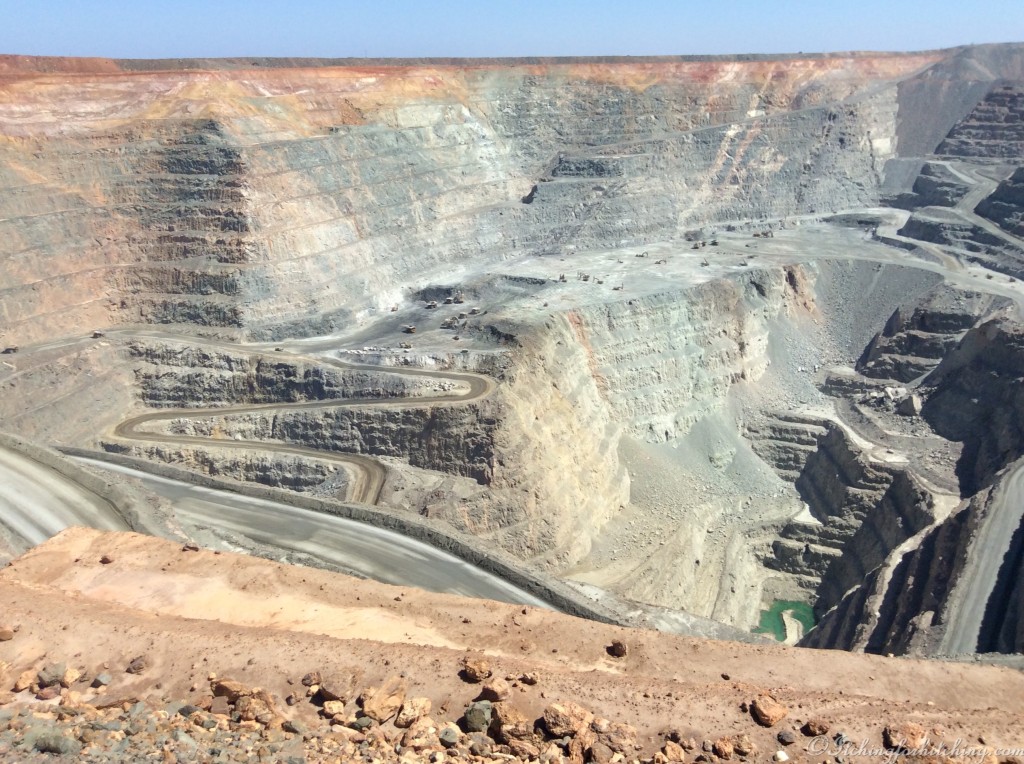
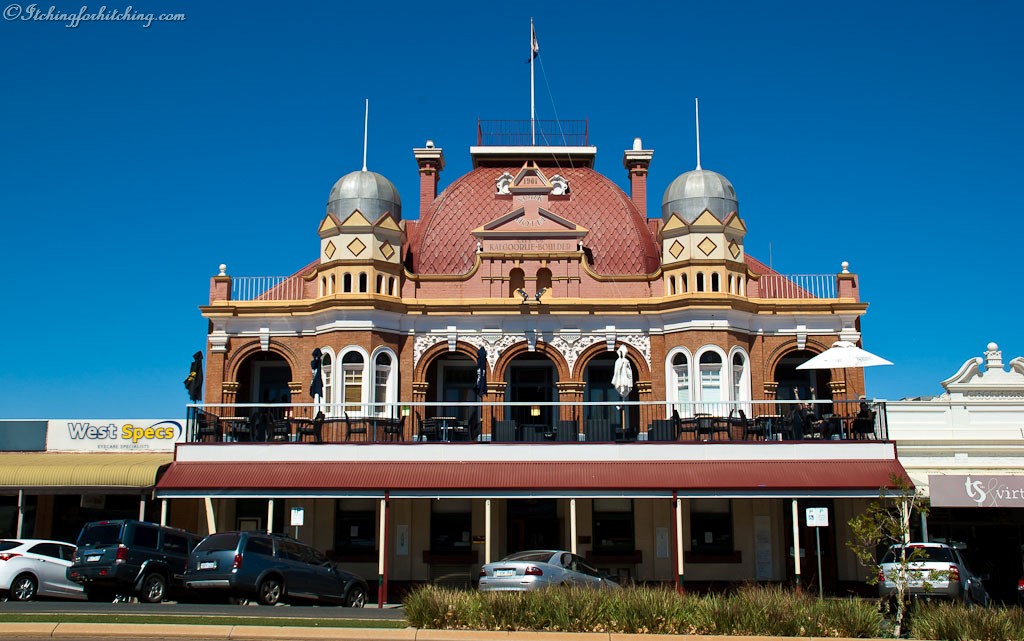
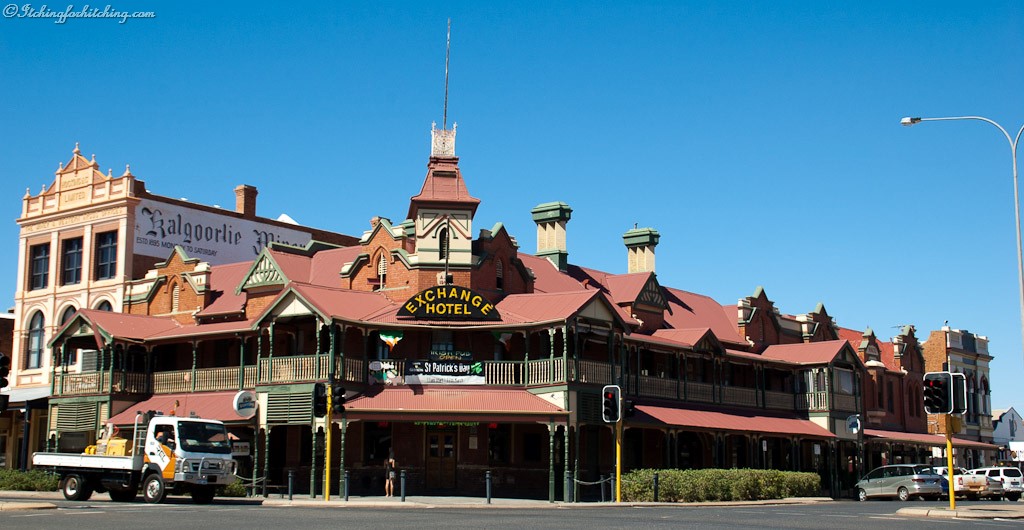
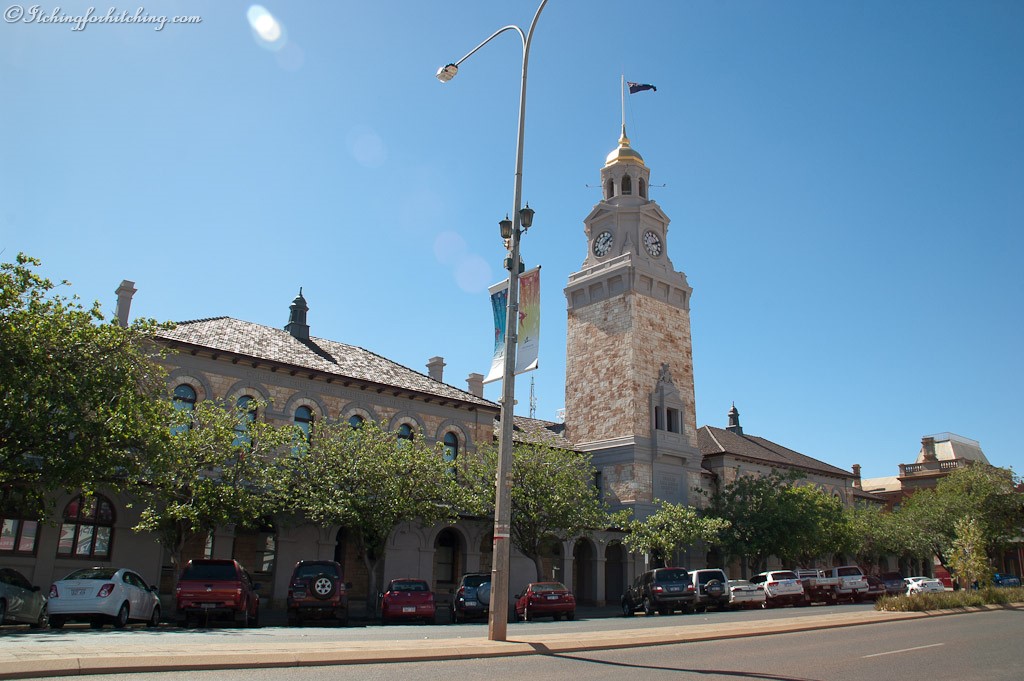
Norseman (WA)
Australian history is peppered with stories of innocent finds, kids kicking a rock home only to find that it’s a mud-covered nugget.
The town of Norseman lies at the western end of the Eyre Highway and is the first decent-sized town after crossing the Nullarbor. It was named after a horse called Norseman who happened to paw up a nugget of gold and thus cause another gold rush.
Tarnagulla (Vic)
Our friend R has organised dinner at the only pub, The Golden Age, for a few mates who are all Old Tarnagullans who now all live in Melbourne, though some like R have smallholdings here. The front bar is crowded and a guitarist plays in the corner. The music flows through to the rough old dining room out the back. By rough I should explain that the front half of the pub was rebuilt in the 1960’s style after a fire demolished the 100 year old hotel. Not much has been done to the place since. The floor in the front half of the dining room is a form of chipboard. This gives an interesting juxtaposition, the front section being 1960’s with a large table of Tarnagulla historical buffs and the back section of 1860’s architecture with a table of Ulysses Club bikers all clad in black leather with flowing beards. One of our dinner party group is published local historian David Gordon and there is much talk about gold finds, murder, and mayhem and a few giggles about how the Trustee of the Anglican Church was also the Fire Chief at the time that the church burnt down. Our mate R cops a fair drubbing about hidden nuggets of gold as his family purchased their land after finding a fifty ounce nugget back in 1903. I’m having thoughts of how serendipitous this is. After all, I wouldn’t be here if my great-grandparents hadn’t met in this very town in 1861. Then a chap comes in from the bar proclaiming to be a distant relative of R’s. He is a gold miner from a nearby town and passes a handful of gold nuggets around the table. They are surprisingly heavy and are worth about $500 he reckons. His necklace though, a rough gold nugget, would be worth considerably more. We stumble out into the cold night air and drive cautiously home for fear of hitting a stray kangaroo.
Moliagul – Bugger, now I’ve broken the bloody pick!
Most Australians have heard of the Welcome Stranger nugget but unless you’ve visited the site you may not know the humorous and typically Australian back story.
The Welcome Stranger the largest nugget of gold ever found was unearthed at Moliagul in the goldfields of Central Victoria. There have been some large nuggets found in this area and the ancestors of friends of ours found a 70oz nugget that financed the purchase of their land and the building of the farmhouse that is still in use by the family today. But the Welcome Stranger was and still is the absolute Daddy of them all. And here I must quote directly from the storyboard near the site of the discovery as this story could not be summarised nor described better. Note there are quite a few discrepancies as to the actual weight of the nugget and one must remember that a few ounces here or there are nothing compared to the nugget’s overall size.
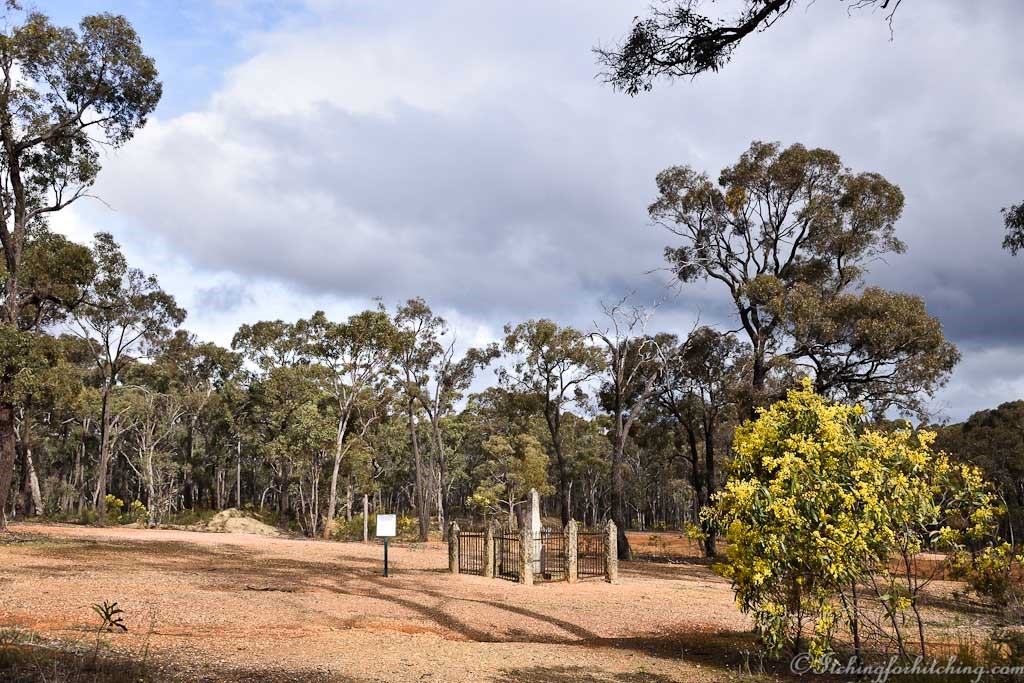

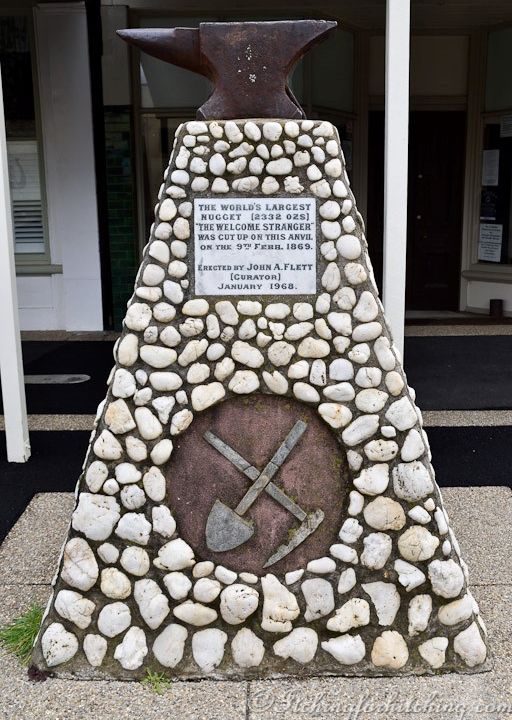
The Monument at Moliagul reads:
“On this spot the largest Nugget of gold found in The world was discovered On the 5th Feb 1869 By John Deason and Richard Oates”
The storyboard reads: “Gross Weight 2520 (troy) ozs (approx. 72kg) Value (1869) £9534 At today’s Gold Value (2013) $3 – 4 milllion
…Both Deason and Oates were born on the island of Tresco – 50kms south west of Lands End, England. The two grew up together and after learning of the discovery of gold in Australia, arrived in Bendigo in February 1854. They spent eight years there with only moderate success, and then moved to Moliagul.
Deason and Oates pegged a puddling claim on the side of this hill; they were aware of large nuggets having been found in the gully below (known as Black Gully).
They also selected farming land near this site which they continued to farm while stripping the surface layer of the puddling claim and washing it in a puddling machine.
In 1866 the pair found a 1.1kg (36oz) nugget, which encouraged them to continue their efforts.
As history shows their persistence paid off with the discovery of the “Welcome Stranger”, still the largest nugget ever found in the world.
On the morning of Friday 5th February 1869, Deason was breaking up soil on the claim when he hit what seemed to be stone. After hitting it a second and third time and clearing away the soil with a pick, he saw gold. The nugget was only 2.5cm (1 inch) below the surface, after clearing away more dirt Deason broke his pick handle in an attempt to lever it from the ground. He finally resorted to a crowbar.
Oates busy ploughing in his nearby paddock was called up by Deason’s son. Not wanting to create suspicion among people living and working nearby, the two miners covered the nugget again and continued as if nothing had happened.
Later that afternoon the nugget was placed in a dray and taken down the hill to the Deason house. The gold was stained black by ironstone deposits and was mixed with a large quantity of quartz. After placing the nugget in the fire, the gold expanded and the quartz became brittle and loose. When the nugget cooled 26kg of quartz was prised off and later crushed in a local battery, belonging to a Mr. Edward Endey.
After keeping the discovery to themselves all weekend, Deason and Oates decided to hold a party for their friends on the following Monday. They hid the nugget under a cloth at the end of the table, and at an appropriate moment during the evening revealed their magnificent prize. “Don’t go home boys” said Deason “that’s solid gold and I want you to stay the night and escort it to the bank at Dunolly tomorrow.”
Next morning the nugget was loaded onto Edward Endey’s spring cart and the convoy left for Dunolly. Walter Brown a neighbour, was selected to go into the London Chartered Bank and ask the teller “What are you paying for gold by the hundredweight?”, after which the nugget was brought in and presented to the manager.
Soon after the find, Richard Oates returned to Cornwall, where he married Jane Penrose. He wasted little time in bringing her back to Moliagul and continued working the claim with Deason. By 1875 it had been worked out and Oates moved with his family to Dunolly. He continued farming, shifting a second time to land in Bealiba then later to Woodstock near Bendigo. Richard Oates died in 1906
Aged 79, and is buried in the Marong Cemetery.
John Deason continued mining, having various puddling machines and later a quartz crushing battery. During the depression of the 1890’s part of his livelihood came from operating the battery in Moliagul, thus providing great stimulus and encouragement for other miners to sample reefs in the area instead of merely seeking alluvial gold. He invested money in a further property, known as The Springs at Moliagul, and he and his family moved there. His descendants still farm land in Moliagul today. John Deason died in 1915 aged 85.”
Source: Compiled by the Goldfields Historical & Arts Society (Dunolly Museum) in co-operation with the Shire of Bet Bet, Victorian Tourist Commission and Dept. Conservation, Forests & Land.
“The world’s largest Nugget (2332 ozs) “The Welcome Stranger” Was cut up on this anvil On the 9th Febr 1869 Erected by John A Flett (Curator) January 1968
Footnote: The Welcome Stranger was never photographed, so-called pictures that exist are of replicas. Our friends however have on their living room wall, what is to them, a priceless black and white photo of their ancestors proudly displaying their own 70oz find.
These are but a few instances of gold mining that we’ve come across in our travels, but all this talk of dirt and dust is making me thirsty…


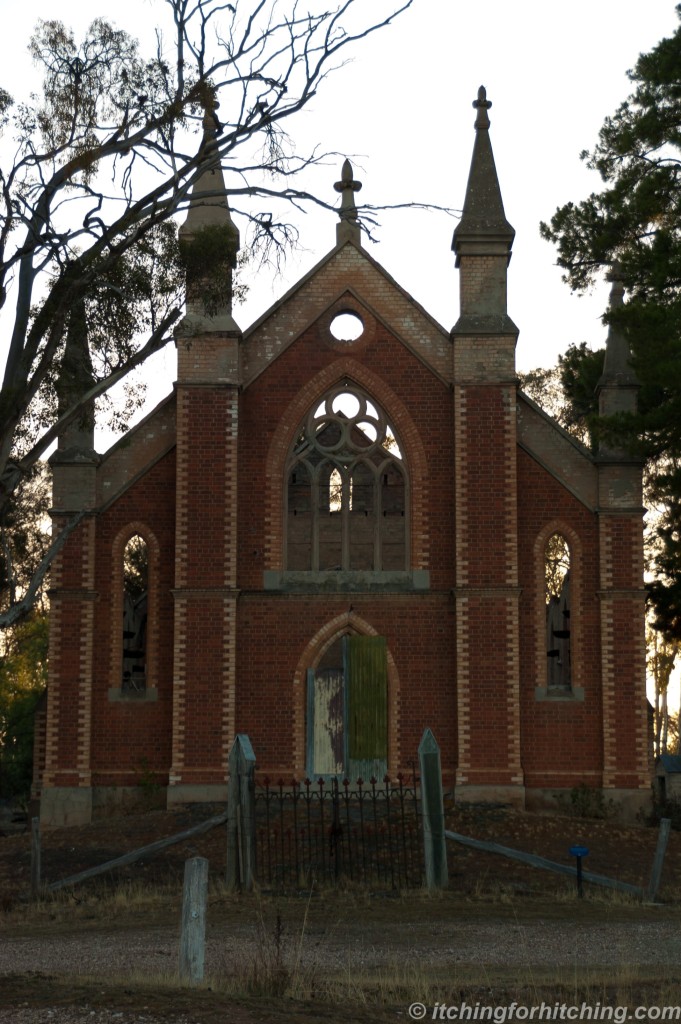
Fascinating history, especially the Deason/Oates story
LikeLiked by 1 person
Travelling round Australia is peppered with interesting stories, never get bored hearing them. Thank you for jogging my memory of Kalgoorlie, a fascinating place
LikeLike
So many stories and snippets. Only yesterday I was photographing the chimneys of an old bank and an old chap stopped to tell that the builders son fell to his death building them.
LikeLiked by 1 person
I love the contact with local people. They love to tell you the history of the area
LikeLiked by 1 person
What a story! And I love that shot of the mine.
LikeLiked by 1 person
It’s a whopper!
LikeLiked by 1 person
Great stories 👏
LikeLike
Thanks Glenys.
LikeLiked by 1 person
A wonderful story of determination coupled with good luck!
LikeLiked by 1 person